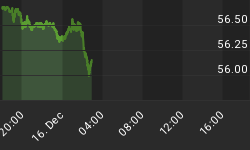"Out of debt out of danger" is an old proverb that says it all. It applies to personal debt as well as to the liabilities of business and government. It may even pertain to the world monetary order and the U.S. dollar standard that rests on mountains of debt. They cast dark shadows not only on the dollar itself but also on American economic conditions.
The world monetary order consists of a large assortment of national currencies all of which are fiat money. They are made legal tender by the decree, or fiat, of their governments. The U.S. dollars we know are money because the courts say they are legal tender and we accept them. Internationally, they have no legal status but are readily used because of their relative prominence and good repute. As the world's most popular money, they have become "standard" money. Unfortunately, it is a precarious standard that may soon sink in the quicksand of debt.
The Federal Reserve manages the standard in utter disregard of basic principles and laws of economics. It blithely and routinely ignores market rates of interest that limit the demand for loan funds to the supply of savings. It prints money and creates credit at will, allowing member banks to borrow new funds at one percent and then relend them happily at 4, 5 or even 6 percent. Its bargain rate induces financial institutions to extend new credits not only to the federal government itself but also to business and consumers. Guided by popular notions of the benefits of money creation and driven by political concerns, Federal Reserve governors take pleasure in keeping their interest rates far below market rates in order to stimulate and activate the economy, thereby creating bubbles of debt.
During the great stock market bubble of the 1990s, growing current-account trade deficits signaled a rapid flow of American funds abroad. Between 1992 and the first quarter of 2002 they moved in payment of the annual excess of imports over exports of goods and services actually rose to some $500 billion or five percent of gross national product. Other countries obviously run trade surpluses that cover these deficits, acquiring masses of U.S. dollars or U.S. Treasury obligations. Japan is by far the largest American creditor country, followed by China and the newly-industrialized and developing countries in Asia. In recent months they were joined by the oil-exporting countries, including Russia and Norway, which are the temporary beneficiaries of soaring oil prices.
A world economy that labors under such chronic imbalances with goods and services flowing to the biggest and richest economy and its fiat money drifting to poorer countries is highly unstable. Some foreign observers even call it "perverse;" for this reason, they are searching for new ways to sustain global activity that does not rest on a growing mountain of U.S. debt. But they need not search far; inexorable economic principles are bound to force a correction.
According to an optimistic view of global readjustment, a gradual fall of the U.S. dollar relative to the Euro and other currencies would facilitate a smooth correction. In the United States, goods prices would rise gradually thus boosting industrial output and reducing unemployment - provided the costs of labor do not rise as rapidly as goods prices. In creditor countries with floating exchange rates, currencies would appreciate toward the dollar and thus facilitate trade readjustments. In creditor countries with fixed or tightly managed exchange rates, such as China, the imbalance is likely to continue as long as they retain their rigid attachment to the U.S. dollar. If China should ever sever its connection to the dollar, the rest of Asia undoubtedly would follow suit and facilitate the readjustment.
There are other noteworthy scenarios. One is a sudden rather than smooth decline of the dollar. It would not take much to upset an international configuration in such imbalance. An abrupt fall of the dollar would trigger sharp rises in long-term interest rates and steep falls in American asset prices. They in turn would reduce household spending, which would aggravate the economic slowdown. In reaction, the Fed may accelerate its debt-monetization and dollar depreciation.
Yet another possibility is that China and its Asian partners will resist exchange-rate adjustment to the bitter end. It would delay the correction in the short run, but would aggravate the accumulation of bad debts and worsen the inevitable adjustment in the long run.
The worst conceivable scenario would be a combination of present monetary and fiscal policies together with an explosion of American protectionism. Present policies alone may lead to an abrupt fall of the dollar and all its dire consequences. To block readjustment by sheltering domestic industries from foreign competition would make matters worse. To exclude certain imports or impose new duties on imports from creditor countries undoubtedly would be popular with protected industries but highly contentious in creditor countries. For a debtor to strike at his creditors always is ill-advised and unwise; it may spell the end of the world dollar standard.
A mountain of debt casts a shadow on the brightest place. American current-account trade deficits and foreign debts are casting a dark shadow on the U.S. dollar.
















